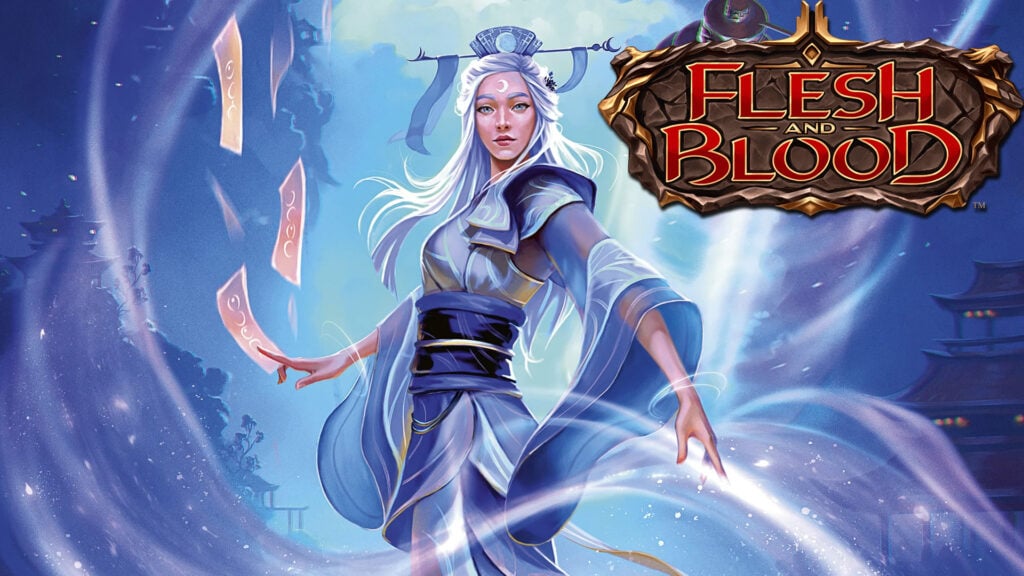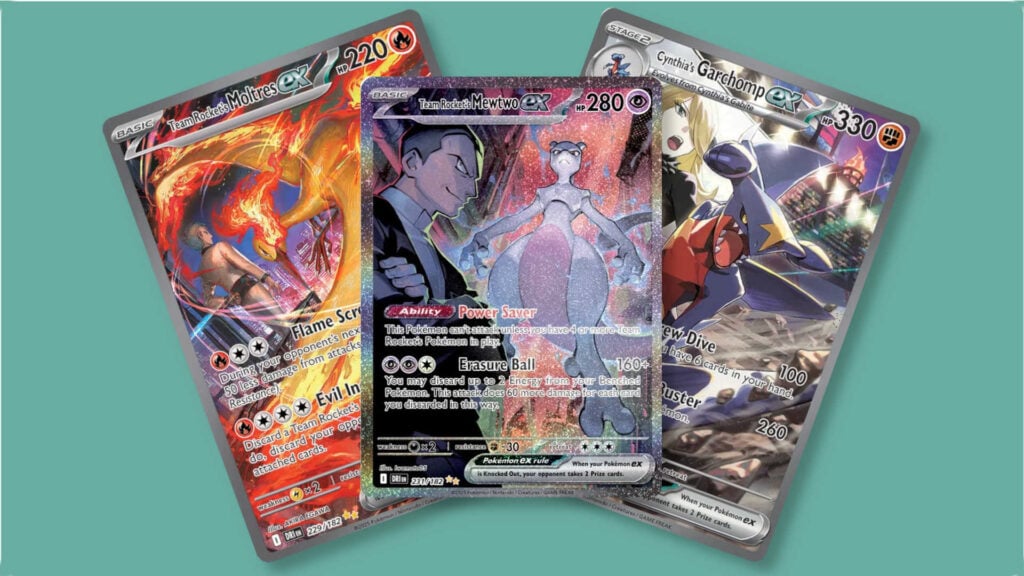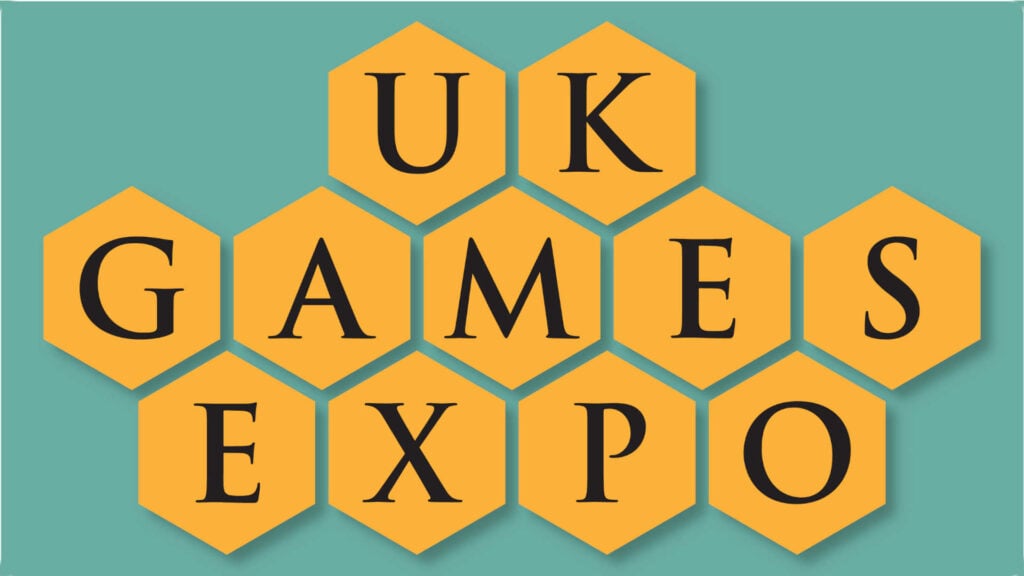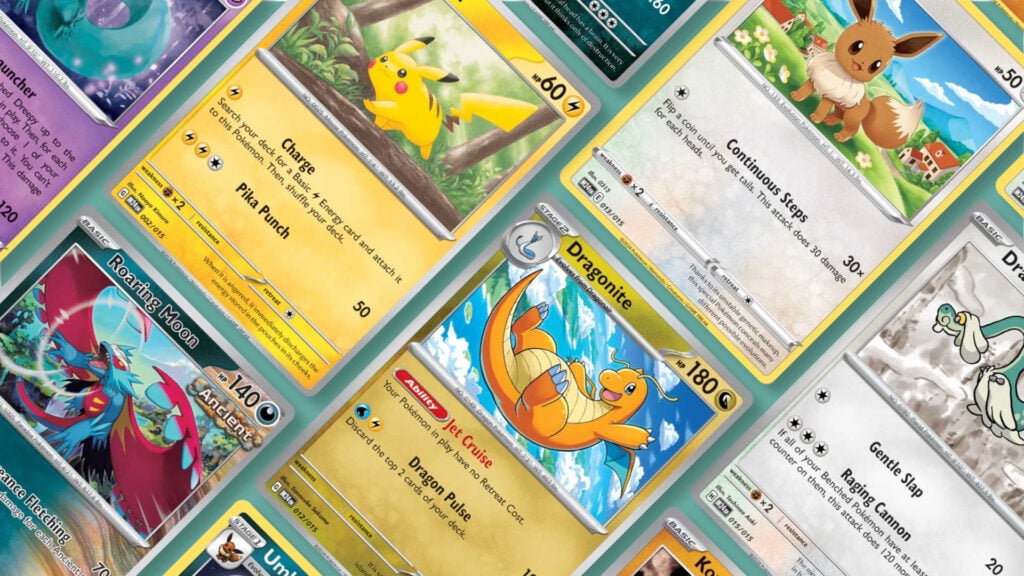Image credit to Legend Story Studios
Flesh and Blood is best when you’re trying to improve; the minute decisions matter, the more prepared wins and hard work is rewarded. But where would a new player begin? By no means am I a champion of Flesh and Blood, but I’ve seen my community grow over the past four years, and have thrown my hat in the ring of every competitive season since I’ve stepped foot in this game. And I’ve watched players grow from their first Armory to booking flights for the Pro Tour.
So join me, as I guide your hand to engaging in competitive Flesh and Blood.
Table of Contents
ToggleStep 0: Learn the Rules
First of all, the rules! This is rather broad; start by watching the Ira tutorial video on the fabtcg site and reading our Beginner’s Guide, then look up the types of heroes in the game to see which deck you would like to pick up. When it comes to learning the very basics, my advice is to take it slow, not think about winning, and ensure your understanding of the fundamentals is solid so you don’t get confused later! Go Again refunds the action point, arsenal lets you play cards, and cards hit when damage is dealt.
Most importantly, if you don’t know something, always ask!
Flesh and Blood is also best experienced through community. If possible, engage with a friendly local game store (FLGS) and be open to learn! The community is friendly and ecstatic to welcome someone new to the best game on the market.
Alternatively, looking up content creators, less so the hyper competitive ones and more so the ones tuned towards the stepping stones for the game, is a great start. I absolutely would not engage in Flesh and Blood alone. The game is at its worst late at night, staring at a computer screen, playing against someone you don’t know.
Step 1: Math
Flesh and Blood simulates moment-to-moment, tense hand-to-hand combat. But it’s also a calculator simulator. In the end, the turn-to-turn gameplay leads to edging out points of life, or value, and slowly turning these advantages into a win.
Every strong player knows this; math is under the hood of the game, and understanding these transactions of value is critical to beginning to engage with the higher forms of interaction in this game.
At a base, each card is normally worth about three value, as typical cards block for three. However, the offensive rate of cards are four, as the best cards translate to four points of damage or more.
This fundamental understanding lends itself to all aspects. One key early thing new players learn is that you should not be holding cards in between turns, as they’re wasted value since you always draw up to your intellect. As such, most turns involve expending your hand as efficiently as possible. This involves sequencing of attacks, and blocking or using your arsenal when your hand can’t be fully played out.
These translate to further realizations, such as setting up cards to derive more value through the arsenal. That weapon swings don’t cost a card in the deck, and can generate value.
This is an unspoken understanding between competent players while discussing lines, and many of Flesh and Blood’s deepest complexities only come into play once a thorough understanding of the value battle with your opponent is met.
Most of these realizations about the fundamentals of the game are best found organically, however, there are plenty of content creators that go in-depth to how mathematics underlie the game. On the Bauble by Yuki Lee Bender and the Runaways podcast are two that discuss these concepts well.
Step 2: The Decks
Once you understand the mechanisms of Flesh and Blood, next arrives the understanding of the deck you’ve chosen. This encompasses its cards, its spike turns, and perhaps learning a couple of tricks that make you stand out as its pilot.
This also requires understanding the wide variety of opponents. Half the battle is knowing your opponent and what they’re capable of. Over time, knowing what they can do lets you know what to play around, what should be blocked, and how to sideboard into them. After playing the game for some time, you start to simulate your opponent’s turn beforehand based on how their hero blocks.
The key heroes that take advantage of your lack of knowledge are Warriors, Assassins, and Illusionists. Warriors need you to respond precisely to expect their threats and when to block them properly else they generate value. Assassins disrupt your plan and test you on how you would play around their disruption and come out on top. Illusionists present difficult threats that need precise answers, otherwise they overwhelm you with value.
Once you grasp what each hero is capable of, the real game starts.
Step 3: Game Plans
Game plans are the beginning of where you try to outwit the opponent. They’re critical in how you interact. From linear aggressive decks looking to take your opponent as quickly as possible to control decks aimed to dissolve your plan, plans are critical.
Here’s an example. You’re Aurora, Shooting Star and you’re facing Dash I/O. You can present three plans.
- She can play a math game, block efficiently when Boom Grenades are presented and enact a midrange game plan.
- She can play an aggressive game, block only necessary hits, and as much as possible with armor, trying to bring the Dash I/O player down as fast as possible.
- Lastly, she can take out her instants and attempt to fatigue the Dash I/O player.
The Dash I/O player can begin the game doing one of two things. One, she presents an efficient 60 cards and plays an aggressive game against Aurora. She can, however, pack more cards to pad out her deck to hedge against fatigue, at the cost of the deck’s consistency. This leads to her vulnerability to getting raced. See the mind game here?
Game plans also change in the middle of the game, such as the Aurora noticing Dash I/O taking time to play weak setup turns, she can take some damage to go onto the offensive instead. On the contrary, if Dash I/O notices Aurora playing defensively, she can play more setup turns and conservatively with her deck, to outplay her fatigue. These mid-game adaptations are what separates an average player from a good player.
The understanding of fatigue as a resource also comes with ample experience at the game. Each card isn’t just worth only three value blocking, but running an opponent out of cards is also a way to win. Certain heroes leverage this better than others, and again, it’s important to recognize when it’s being used against you.
Risk is also something strong players take into account. At times, suboptimal lines are taken in light of a potentially greater reward. While this presents itself in obvious ways, such as Scabskin Leathers, it can manifest itself in many forms. One involves making an attacking turn weaker, hoping to set up an arsenal banking on an opponent’s poor hand to survive to the next turn to finish them off. Another involves sideboarding, whereby poor matchups ask for drastically different sideboarding in order to attack the opponent from a different angle to try and squeeze out a win. One unlikely win is always better than numerous close losses.
Step 4: Iteration
This is the part that most players have reached, and is one of the reasons why I love the competitive community. After ending the match, regardless of win or loss, your first thought in your head should be “could anything have gone better?” Friendly opponents would be happy to discuss the outcome of the match with you.
This iterative process of reviewing what happened and what could be better is key to improving your play. This is where having friends who you play with comes in handy, as they can give you alternative viewpoints, as fellow pilots of the deck or even opponents, giving you insight to what could be better. After all, we engage in the game as mistakes and decisions matter. The game often ends on a player making one more mistake than the other. And with enough practice and improvement, that will not be you.
Lastly, there will come a time where you will realize something is wrong, but it’s not your play. The cards you hold in your hands could be better. Cue: deckbuilding.
Step 5: Deckbuilding
While all I’ve previously expressed largely involves play, deckbuilding is an expression of your understanding of the hero, and the game, and creating a pile of cards that best finds wins.
And deckbuilding is hard. It’s easy for anyone to put a pile of cards together and play them, but to make smooth deck lists, with plans for all of your expected matchups, and to have the correct ratios and pitch bases is very challenging. It takes a lot of testing, a lot of experience, and, often enough, collaborators to create a smooth deck list. And this is important. There is nothing more frustrating than playing perfectly, but being gated by an imperfect deck.
It also takes great skill to adjust deck lists based on testing, and to accommodate the metagame. Knowing what your metagame niche is and designing a precise list to take down a tournament is what makes a great player. At this stage, its almost imperative to find others to work with.
Limited
Limited is an extension of all the previously discussed formats and is a great way to separate the good players from the greats. You have to learn the format, learn how to craft a deck on the go and make use of the tools that you are given. Then you have to execute on the newly crafted deck on the fly, taking into account all of the skills that make for great play for three rounds, before having to do it all over again.
Limited is necessary. Those six rounds are what set apart decent Tier 3 finishes, and Top 8 players.
Step 6: Greatness
At this point you’ve Top 8’d several local events, maybe even a Tier 3 event, and are looking to make a name for yourself. You’ve mastered the game; so what’s left?
The greats innovate. The greats find methods to build decks never before considered, and have the execution to make them sing. Michael Hamilton’s Bull Iyslander, Stormbind. Mara Faris’s Redline Dromai, Ash Artist. Charles Dunn’s Block-Heavy Briar, Warden of Thorns.
Creating all of these decks require a mastery of the game and the willingness to explore concepts never before considered, and is an excellent way to get an upper hand in a competition.
You must execute on your vision to the best of your ability, as you are the pioneer, and there has been no previously tread ground.
The greats have impervious mental capability. Tournaments are long and grueling; this is magnified when surrounded by great players, and when the stakes are high. Losses are inevitable, and it’s important to be able to put them at the back of your mind before the next round. Everyone’s first Tier 4 is heart-racing. It gets even more strenuous when you can equate each loss to a financial sum. It’s very easy for your judgment to be impaired by a series of misfortunes, but great players come out on top in the end, and play their best through adversity.
Lastly, the greats are consistent. It’s amazing to put in the work, spike a tournament, have the right deck choice, play perfectly, and snatch the win. After the win, what’s next? You have to do it again. This is harder than it seems. Metagames change, the deck you’ve grown attached to and love is no longer what it used to be, and you have to start from scratch, alongside other players all doing the same. Except you have to show you’re better. What separates talented players from the best of the best is repeating their success, again, and again, and again.
Conclusion
I hope I’ve given some insight to what the steps to competitive success are for Flesh and Blood. The game is difficult, but that’s why I find it so enjoying to engage with. There’s always more, and in every difficult game you know your opponent has worked hard, like you, to fight for the win.
Do say hi if you see me at Pro Tour: Singapore; I don’t bite and love to hear that people read what I’ve written. Thank you very much for reading and best wishes for your tournaments!
Want more Flesh and Blood content? Check out our analysis on why the game is so expensive to play.




